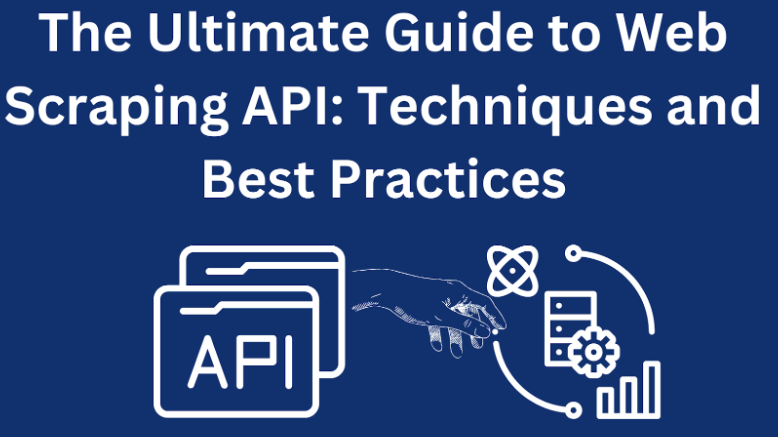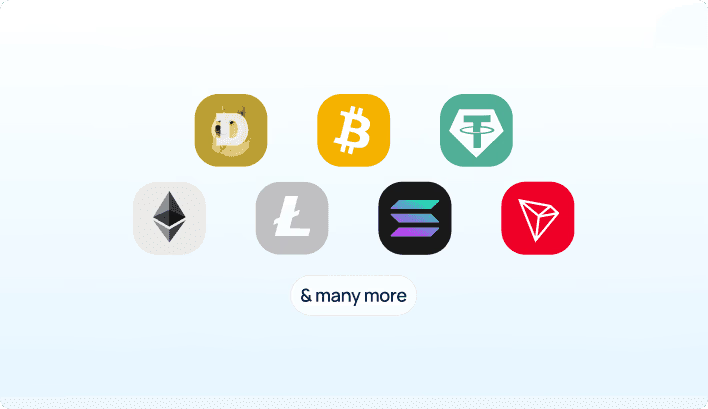Web scraping remains one of the most effective methods for gathering market intelligence, monitoring competitors, and building valuable datasets. However, as websites implement increasingly sophisticated anti-scraping measures, advanced techniques are required to maintain efficient data collection. This guide explores ten powerful web scraping strategies using ProxyVault's robust proxy infrastructure.
Understanding Modern Anti-Scraping Measures
Before diving into techniques, it's important to understand what you're up against. Modern websites employ multiple layers of protection:
- IP-based rate limiting - Restricting requests from a single IP address
- Browser fingerprinting - Identifying and blocking automated browsers
- CAPTCHA systems - Requiring human verification
- Behavioral analysis - Detecting non-human browsing patterns
- JavaScript challenges - Requiring JS execution to access content
ProxyVault's diverse proxy pool and advanced API features provide the tools needed to overcome these challenges.
Technique 1: Intelligent Proxy Rotation
Random proxy rotation isn't enough for sophisticated targets. Intelligent rotation strategies consider:
- Target website's rate limiting patterns
- Geolocation requirements
- Proxy performance metrics
- Previous success rates with the target
// Example: Intelligent proxy rotation with ProxyVault API
const getOptimalProxy = async (targetDomain) => {
// Request country-specific proxies with fast response time
const response = await fetch(
'https://api.proxyvault.com/v1/list/json?country=US&timeout=5000&limit=10',
{
headers: {
'Authorization': 'Bearer YOUR_PROXYVAULT_API_KEY'
}
}
);
const data = await response.json();
const proxies = data.data.proxies;
// Select proxy with lowest response time
const optimalProxy = proxies.sort((a, b) =>
a.response_time - b.response_time
)[0];
return optimalProxy;
};Technique 2: Browser Fingerprint Randomization
Each request should present a realistic but different browser fingerprint, including:
- User-Agent strings that match common browsers
- Consistent header ordering
- Appropriate Accept-Language headers based on proxy location
- Realistic screen dimensions and color depth
// Randomizing fingerprints to match proxy location
const getUserAgentForCountry = (countryCode) => {
const userAgents = {
// Different user agents by country market share
'US': [
'Mozilla/5.0 (Windows NT 10.0; Win64; x64) AppleWebKit/537.36 (KHTML, like Gecko) Chrome/91.0.4472.124 Safari/537.36',
'Mozilla/5.0 (Macintosh; Intel Mac OS X 10_15_7) AppleWebKit/605.1.15 (KHTML, like Gecko) Version/14.1.1 Safari/605.1.15'
],
'DE': [
'Mozilla/5.0 (Windows NT 10.0; Win64; x64; rv:89.0) Gecko/20100101 Firefox/89.0',
'Mozilla/5.0 (X11; Ubuntu; Linux x86_64; rv:87.0) Gecko/20100101 Firefox/87.0'
],
// Add more country-specific user agents
};
const defaultAgents = userAgents['US']; // fallback
const countryAgents = userAgents[countryCode] || defaultAgents;
// Randomly select a user agent
return countryAgents[Math.floor(Math.random() * countryAgents.length)];
};Technique 3: Request Pattern Humanization
Automated scraping often reveals itself through unnatural request patterns. Implementing human-like browsing behavior includes:
- Variable delays between requests (not fixed intervals)
- Following logical page navigation paths
- Occasional scrolling and mouse movement simulation
- Requesting associated resources (CSS, JS, images)
- Session-based browsing with cookies
// Example: Human-like request timing
const humanizedSleep = async () => {
// Random delay between 2-7 seconds
const baseDelay = 2000 + Math.random() * 5000;
// Occasionally add a longer pause (15% chance)
const extraDelay = Math.random() > 0.85 ?
Math.random() * 10000 : 0;
const delay = baseDelay + extraDelay;
return new Promise(resolve => setTimeout(resolve, delay));
};Technique 4: Geolocation-Specific Scraping
Many websites show different content based on visitor location. Using ProxyVault's country-specific proxies allows you to view exactly what users in those regions see.
// Getting country-specific proxies for localized content
const getLocalizedContent = async (targetUrl, countryCode) => {
// Request a proxy from specific country
const proxyResponse = await fetch(
`https://api.proxyvault.com/v1/random/json?country=${countryCode}`,
{
headers: {
'Authorization': 'Bearer YOUR_PROXYVAULT_API_KEY'
}
}
);
const proxyData = await proxyResponse.json();
const proxy = proxyData.data;
// Use proxy to fetch localized content
// Implementation depends on your HTTP client library
console.log(`Using ${countryCode} proxy: ${proxy.ip}:${proxy.port}`);
// Continue with your localized scraping
};Technique 5: Distributed Scraping Architecture
Enterprise-scale scraping benefits from distributed architecture:
- Task distribution across multiple workers
- Proxy assignment by geographic region
- Centralized proxy success/failure tracking
- Automatic scaling based on target website response
ProxyVault's Enterprise plan with unlimited connections and bandwidth is ideal for this approach, eliminating concerns about hitting resource caps during large operations.
Technique 6: Headless Browser Automation
For JavaScript-heavy websites, headless browsers provide complete rendering capabilities:
- Puppeteer or Playwright for Chrome/Firefox automation
- JavaScript execution and event handling
- Wait for dynamic content loading
- Proxy integration at the browser level
// Example: Puppeteer with ProxyVault proxies
const scrapeWithHeadlessBrowser = async (url) => {
// Get a proxy from ProxyVault
const proxyResponse = await fetch(
'https://api.proxyvault.com/v1/random/json?protocol=http',
{
headers: {
'Authorization': 'Bearer YOUR_PROXYVAULT_API_KEY'
}
}
);
const proxyData = await proxyResponse.json();
const proxy = proxyData.data;
// Launch puppeteer with proxy
const browser = await puppeteer.launch({
args: [
`--proxy-server=${proxy.ip}:${proxy.port}`
]
});
const page = await browser.newPage();
// Add proxy authentication if needed
// await page.authenticate({ username, password });
await page.goto(url);
// Wait for content to load
await page.waitForSelector('.content-loaded');
// Extract data
const data = await page.evaluate(() => {
// DOM manipulation and data extraction
});
await browser.close();
return data;
};Technique 7: Proxy Session Management
Session management ensures consistent identity throughout a multi-page scraping workflow:
- Maintaining the same proxy for login-protected sequences
- Cookie and session state preservation
- Handling authentication across multiple requests
Technique 8: Adaptive Scraping Throttling
Rather than fixed rate limits, implement adaptive throttling based on target website behavior:
- Monitoring response times and status codes
- Adjusting request frequency based on server response
- Backing off when encountering resistance
- Accelerating when conditions are favorable
// Adaptive throttling based on website response
class AdaptiveThrottler {
constructor() {
this.baseDelay = 2000; // Start with 2 second delay
this.currentDelay = this.baseDelay;
this.consecutiveErrors = 0;
this.consecutiveSuccesses = 0;
}
async wait() {
return new Promise(resolve => setTimeout(resolve, this.currentDelay));
}
registerSuccess() {
this.consecutiveErrors = 0;
this.consecutiveSuccesses++;
// Speed up slightly after consistent success
if (this.consecutiveSuccesses > 5 && this.currentDelay > 1000) {
this.currentDelay = Math.max(1000, this.currentDelay * 0.8);
}
}
registerError() {
this.consecutiveSuccesses = 0;
this.consecutiveErrors++;
// Exponential backoff on errors
if (this.consecutiveErrors > 0) {
this.currentDelay = this.currentDelay * (1 + this.consecutiveErrors * 0.5);
// Cap at 2 minutes
this.currentDelay = Math.min(this.currentDelay, 120000);
}
}
}Technique 9: Custom Proxy Selection Algorithms
Different scraping targets require different proxy selection strategies:
- E-commerce sites: Residential proxies with diverse IP distribution
- Search engines: Geographically relevant proxies with clean history
- Social media: Proxies with established history and cookies
- High-volume targets: Fastest datacenter proxies with reliable uptime
ProxyVault's comprehensive API parameters allow for precise proxy selection based on your specific requirements.
Technique 10: Failure Recovery Systems
Robust scraping operations need automated recovery mechanisms:
- Automatic retry with different proxies
- Failure pattern recognition
- Checkpoint and resume functionality
- Data validation and integrity checks
// Resilient scraping with automatic retry
const resilientFetch = async (url, maxRetries = 3) => {
let attempts = 0;
while (attempts < maxRetries) {
try {
// Get a fresh proxy on each retry
const proxyResponse = await fetch(
'https://api.proxyvault.com/v1/random/json',
{
headers: {
'Authorization': 'Bearer YOUR_PROXYVAULT_API_KEY'
}
}
);
const proxyData = await proxyResponse.json();
const proxy = proxyData.data;
// Use proxy to make the actual request
// Implementation depends on HTTP client
console.log(`Attempt ${attempts+1} using proxy: ${proxy.ip}:${proxy.port}`);
// If successful, return the result
return result;
} catch (error) {
attempts++;
console.log(`Attempt ${attempts} failed: ${error.message}`);
if (attempts >= maxRetries) {
throw new Error(`Failed after ${maxRetries} attempts: ${error.message}`);
}
// Wait before retry
await new Promise(r => setTimeout(r, 2000 * attempts));
}
}
};Implementation Strategy
For optimal scraping success, combine these techniques based on your target websites' characteristics:
- Analyze target website protection mechanisms
- Select appropriate proxy types from ProxyVault (residential for high-security targets, datacenter for performance)
- Implement the techniques most relevant to your target's defenses
- Start with conservative request rates and scale gradually
- Monitor success rates and adjust strategies accordingly
Leveraging ProxyVault's Enterprise Advantages
ProxyVault's Enterprise plan provides several advantages for advanced scraping operations:
- Unlimited Bandwidth: No concerns about data transfer caps during large operations
- Unlimited Connections: Run as many concurrent scrapers as needed
- Unlimited Threads: Implement multi-threaded architectures without limitations
- Diverse Proxy Pool: Access to both residential and datacenter IPs for any target
- Comprehensive API: Precise control over proxy selection and management
Conclusion
Successful web scraping in today's environment requires sophisticated techniques that go beyond basic proxy rotation. By combining ProxyVault's robust proxy infrastructure with these advanced strategies, you can build resilient, efficient scraping systems capable of gathering valuable data from even the most protected targets.
Remember that responsible scraping practices—including respecting robots.txt, implementing reasonable delays, and minimizing server impact—are not just ethical considerations but also practical approaches that improve long-term scraping success.
ProxyVault's Enterprise plan, with its unlimited resources and diverse proxy options, provides the ideal foundation for implementing these advanced techniques at scale.



